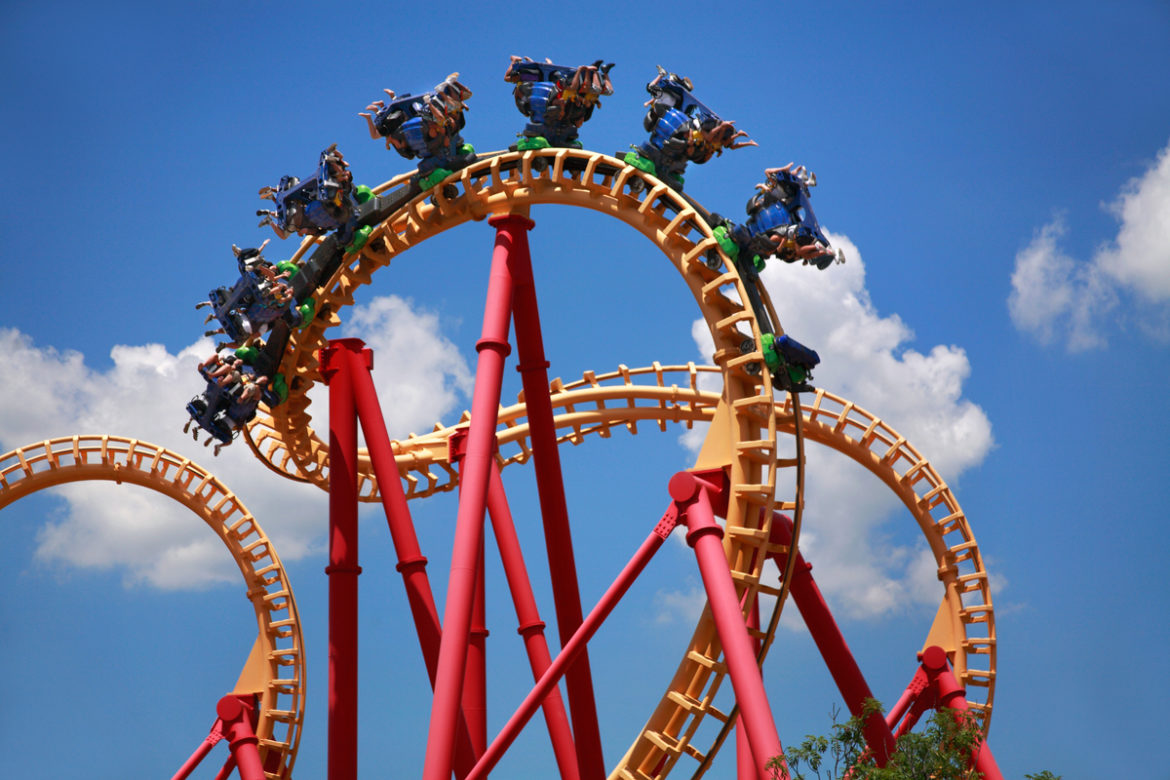Until the year 1940, the berry farm of Walter Knott was a mere roadside attraction. Then, it was converted into the US’s first amusement park. Walter Elias Disney was among Knott’s biggest supporters. They quickly started a friendship as they took their wives antiquing and swing dancing. The two were part of a Children’s Hospital OC planning council. By 1948, Walter Elias Disney had started to brainstorm ideas for an amusement park, but he and Knott spent much time on what would be for the customer’s benefit.
In 1952, Knott asked Walt and Lillian Disney to become honored guests of the Calico Railroad amusement park attraction’s first run. However, in the same year, Disney got inspired by beyond just the steam locomotive of Knott. The Butterfield Stage Coach attraction of Knott gave rise to the Rainbow Mountain Stagecoach Ride, Disneyland’s inaugural-day attraction. Berry’s Ghost Town inspired Disney’s Frontierland. Further, Disney even got Knott’s Dentzel Carousel, and then themed it again to be Fantasyland’s King Arthur Carrousel, complete with its same old organ.
Anyhow, the most noteworthy inspirational factor for Disney was Bottle House and Music Hall of Knott, which had an exotic birdcage collection full of automated birds. That was the attraction that inspired Disneyland’s Enchanted Tiki Room, which launched ‘Audio-Animatronics’. For the uninitiated, ‘Audio-Animatronics’ is a type of robotics animation, now an established standard in the amusement park industry.
Walter and Cordelia Knott attended the Disneyland inauguration event, and they were pleased. The spike in Anaheim tourism resulted in more individuals visiting OC and looking at the attractions near the county.
In 1960, Knott’s Berry Farm started its first-ever E-ticket-based attraction named the Calico Mine Ride. Walt Disney loved that attraction from designer and builder Wendell Hurlbut. So, Disney was happy for Hurlbut when he knew that the mountain façade obscured the queue for that ride. That caused the line to appear shorter, plus it included the experience of waiting there in the attraction. Walt Disney soon included that concept in future Disneyland rides. Then, he started to visit Knott’s theme park more often, and brainstorm business ideas with Hurlbut over lunch.
Disney, Hurlbut and Knott stayed good friends up to the time Disney suddenly died. Anyhow, the association between Disneyland and Knott’s amusement park continued. The latter park showed a framed page of its guestbook with the entry of Disney on it, whereas Disneyland sometimes borrowed carousel repair components from Knott’s park.
In 1969, Walt Disney Imagineering legend Tony Baxter went away from his Disneyland workplace to take part in the inauguration of The Timber Mountain Log Ride at Knott’s park. Baxter was working as a ride operator at Disneyland when he attended the ceremony, where Hollywood legend and OC native John Wayne took the first ride. A decade afterwards, Baxter designed Big Thunder Mountain Railroad, his first Disneyland ride inspired by Knott’s Calico Mine Ride.
Baxter put the queue spot for the ride below the railroad track as well as added an earthquake shaft that would tremor and a tunnel that would explode. Thus, Baxter made it a piece of respect to Walter Knott’s ride. The Timber Mountain Log Ride design of Hurlbut established a level of quality for future theme park rides worldwide with storytelling, scenery, and theming all incorporated in a life-sized mountain. He used Hurlbut’s approach for his Splash Mountain as well as the Indiana Jones attraction at Disneyland.
When Knott got older, his daughter Marion started to take charge of the family-owned business. Marion Knott was among the most important people in shaping Knott’s Berry Farm for the generations of people to come. In 1974, Marion was seeking to make a move with a big show building. She approached Disney Imagineer Rolly Crump, then retired from Disneyland, to ask whether he would be keen on making a dark ride attraction for her father’s theme park. Crump grew up in SoCal, and he went to Knott’s amusement park as a 9-year-old. Therefore, he accepted the opportunity to create that ride for the park.
He could do whatever he wanted to, and with no need to be answerable to someone, he quickly experimented with several ideas that Walt Disney denied him from trying. For instance, combining black light and incandescent light, a concept that Crump had in mind after visiting the Movieland Wax Museum. That resulted in an 8-minute-long dark ride filled with animatronic critters, such as Knottsenbear-y Family, Doctor Fox, and Crafty Coyote.
Knott died as a nonagenarian. Sixteen years later, the family made his theme park available to be sold. The Walt Disney Company bid for the park, and the company soon started to conceive plans to theme it again as the now-defunct Disney’s America. The plans required moving the Knott park entry to its exact replica Knott’s Independence Hall.
The likely new entry would have held Disney’s the Hall of Presidents attraction. The Knott’s park area where the Mystery Lodge is now would have turned into a land of American Indians. The Lewis and Clark River Expedition would have had the ‘Bigfoot Rapids’ river rapids, whereas the Roaring ’20s area would have turned into Enterprise terrain.
Planners considered expanding the Disneyland Monorail System attraction from Anaheim into Buena Park, but they ultimately could not produce practical ways to offer transportation between both parks. Ultimately, the family sold Knott’s amusement park to Sandusky’s Cedar Fair Entertainment Company, mainly because they feared Walt Disney Imagineering professionals would substitute too many creations of their forebears. A few of Disney’s America’s proposed parts were ultimately included in Disney California Adventure.
Almost 80 years after Disney and Knott’s friendship started, its spirit still exists at the two amusement parks. You may appreciate Walt Disney’s quality of going the extra mile and taking inspiration, or Walter Knott’s grassroots and homespun approach to offering themed entertainment. Either way, it is inarguable that the stellar work and impact of those two Walters will continue to exist.
